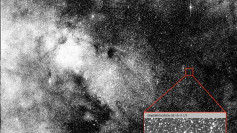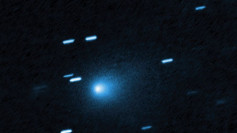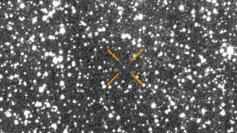Leaked documents referencing U.S. planetary-defense architecture have ignited new scrutiny over how long Washington has been monitoring the interstellar object 3I/ATLAS. The materials, circulated online in early November and reviewed by a Medium writer, point to a decades-long surveillance system-one that allegedly integrates programs known as CASSANDRA, ORACLE VI, ARGUS-VIS, and UMBRA-3/C. The disclosures have intensified speculation about whether 3I/ATLAS was tracked for more than 20 years before its 2025 passage through the inner Solar System.
The documents cite CASSANDRA, an architecture first introduced publicly at the 57th International Astronautical Congress in 2005. That paper described a framework capable of detecting distant objects, monitoring them through cislunar space, and maintaining what the authors called "persistence custody" via distributed sensors. While conceived as theoretical planetary-defense research, the newly leaked images suggest parts of the system may have been active long before the public timeline indicates.
A second pillar of the alleged network is ORACLE, launched by the Air Force Research Laboratory in 2022 under a $72 million contract to Advanced Space LLC. Public descriptions of the program include the ORACLE-M mobility demonstrator deployed in 2024 and the ORACLE-P surveillance satellite scheduled for 2026, equipped with a Leidos imaging payload for wide-field search and narrow-field follow-on tracking. Leaked visuals claim these platforms captured data on 3I/ATLAS near perihelion, recording emissions some observers describe as inconsistent with natural comet behaviour.
A third component, ARGUS-VIS, appears in the same leaked packet. Described as a space-adapted derivative of DARPA's ARGUS-IS system, the platform reportedly handles "256 simultaneous video streams" for persistent wide-field coverage across cislunar space. This capacity aligns with the rapid, high-resolution observations amateur astronomers noted as 3I/ATLAS accelerated past the Sun in late October.
Low-Earth-orbit surveillance may also have been involved. UMBRA's synthetic-aperture radar constellation-operational since 2021-collects imagery at 25-centimetre resolution and is designed for all-weather tracking. The leak references "C/2025 N1 UMBRA-3/C" in connection with one of the 3I/ATLAS images, suggesting layered observation between LEO, cislunar, and deep-space vantage points.
At the centre of this alleged system is the CASSANDRA database, described as an exabyte-scale Apache Cassandra environment ingesting sensor data from ORACLE and UMBRA to maintain a "persistent custody record" of monitored objects. According to the leaked documents, the system supports real-time tracking, historical reconstruction, and automated threat evaluation.
Two images dated 2 November 2025, four days after perihelion, amplified the debate. One shows what is labelled a geometric, star-shaped emission structure in monochrome. Another depicts a green coma with "white-pink plasma streams." The structured emissions, analysts say, contrast with typical cometary outgassing and raise questions about whether the images reflect advanced observation filters rather than anomalous comet physics.
Although the U.S. government has not addressed the leaks, the timing coincides with heightened interest in 3I/ATLAS as NASA prepares to release its own high-resolution images. The disclosures have renewed public scrutiny of long-rumoured planetary-defense systems and revived discussions about how extensively U.S. military and civilian space programs cooperate in monitoring objects entering the inner Solar System.




